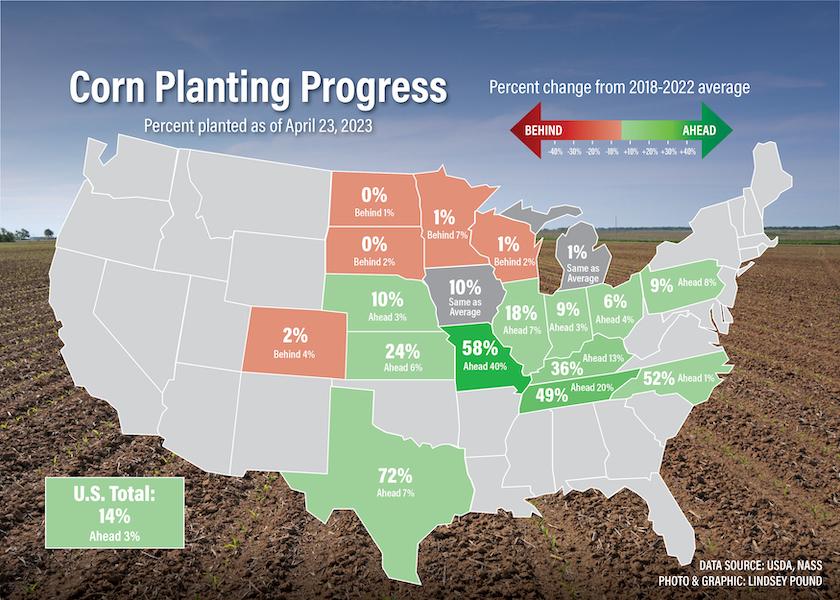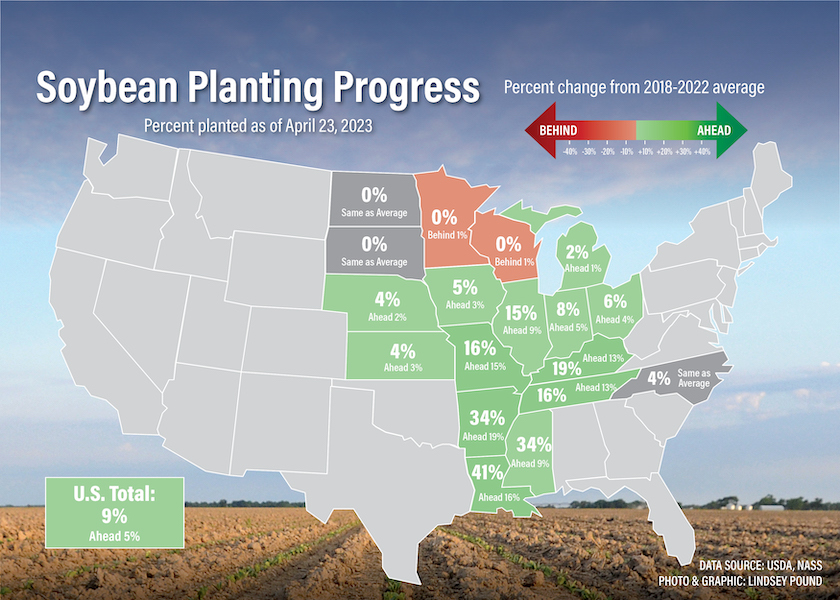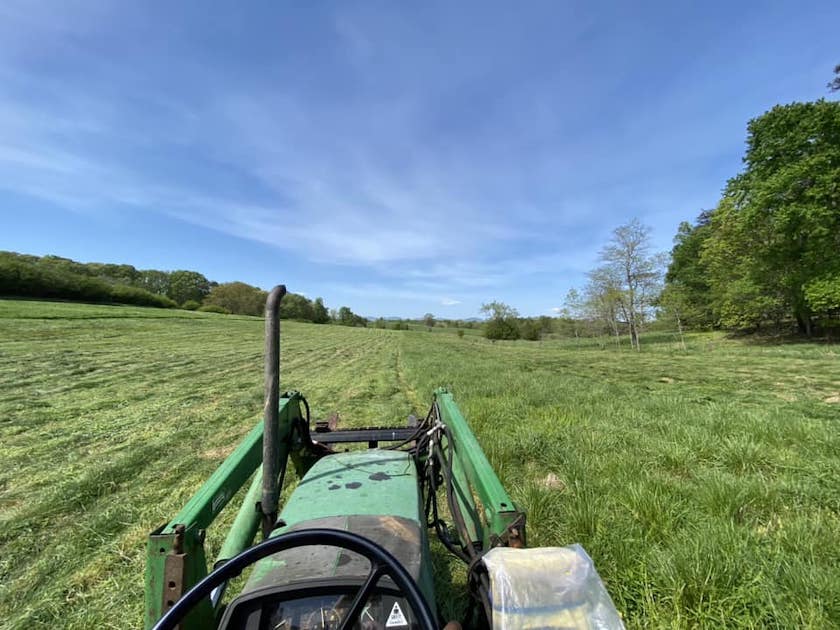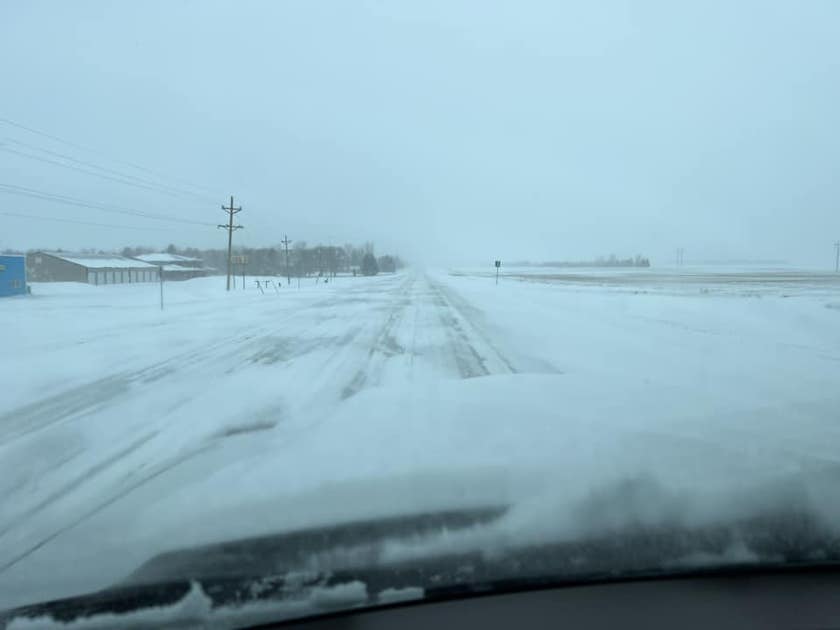USDA Confirms Planters Have Started Rolling in Every State Except North Dakota, South Dakota

Corn and soybean planting is now underway in every state except North Dakota and South Dakota. USDA's weekly Crop Progress Report shows while farmers in Missouri and Tennessee are planting at a rapid pace, those in the upper Midwest are already behind.
USDA says, as of Sunday, April 23, 14% of the nation's corn crop is now in the ground—double the amount of corn planted a year ago. At 14% planted, corn planting is 3 percentage points ahead of average, and a 6-point bump in a week.
Other highlights from this week's corn planting report compared to average include:
- Missouri farmers gained another 28 points in planting pace at 58% planted vs. 18% for five-year average
- Tennessee is 49% planted vs. 29% for the average pace
- Illinois is 18% planted vs. 11% average
- Iowa is on pace with average at 10% planted
- Indiana is 9% planted vs. 6 % average
There are some states lagging in corn. Here's a rundown of who's already running behind:
- Minnesota farmers have 1% of their corn planted vs. 8% average pace
- Wisconsin is 1% planted vs. 3%
- South Dakota hasn't started planting corn, and the average for this time of year is 2%
- North Dakota is 0% planted vs. 1% for the average pace.
Planting pace and emergence seem to be two different issues, as well. USDA reports 3% of the corn crop is now emerged, which is 1 percentage point ahead of average.

Soybean planting is also progressing, with 9% of the nation's soybeans now planted. This year's pace is 6 percentage points ahead of the same time last year and 5 points faster than the average planting pace.
There are several states ahead of the curve this season:
- Arkansas is 34% planted, double the average pace
- Tennessee is 16% planted vs. 3% average
- Mississippi farmers have 34% of their crop planted, compared to 25% for the five-year average.
- Illinois has 15% of the soybean crop planted, vs. 6% for the average pace
Tale of Two Planting Stories
We asked the U.S. Farm Report Facebook page for any planting progress updates. The responses reiterated what UDSA’s latest progress report shows: Little to nothing is planted in the upper Midwest and Northern Plains, whereas the western Corn Belt continues to making major headway in planting this year.
Matthew Trefz farms in Winchester, Ohio, and he says they’ve finished planting soybeans already. He says as soon as conditions get dry enough again, they will start planting corn.

Allen Ippensen farms near Quincy, Ill., and planting has progressed nicely in his area. Ippensen says he’s planted 100% of his corn, and 40% is emerged. He says 80% of his soybean crop is now in the ground, with 0% emerged.
Steve Clark is located in northwest Oklahoma. He says it’s too dry to plant, and if the rains do come to fruition over the next five days, he may switch to milo to plant. He says it looks like his drought-stricken area of Oklahoma should get a decent rain later this week.

In northeast Georgia, Anita Anderson Spangler says they are getting ready to plant alfalfa for their Angus cattle. A lush landscape shows the ample amount of moisture received this year.
Corey Gross farms in southern Tama County, Iowa. He says they only have 85 acres of corn in the ground and 340 acres of soybean. He says they put planting on pause due to the cold weather, and he thinks it could be another week before they get back in the field. Gross says the ground temperature dropped 20 degrees in three days.
Farther north, Micah Peterson is on the northern Iowa and southern Minnesota border. He planted some of his crops during the warm weather two weeks ago, but since then, he’s seen snowfall three times, and below freezing temperatures five times. Their area also saw rain. He says the forecasts don’t show temperatures above 57 degrees for at least 10 more days. Now, some in the area think they’ll have to possibly replant.

Kevin Wolsky is still staring at snow in his area. He lives in Carrington, North Dakota, where he says it was 31 degrees this morning.
Similarly, Rob Ruff is in the south central part of North Dakota. He thinks it could be mid-May before anything is planted around him. He says last year, they started planting May 15.
How’s planting progressing in your area? Share your photos and comments below.







